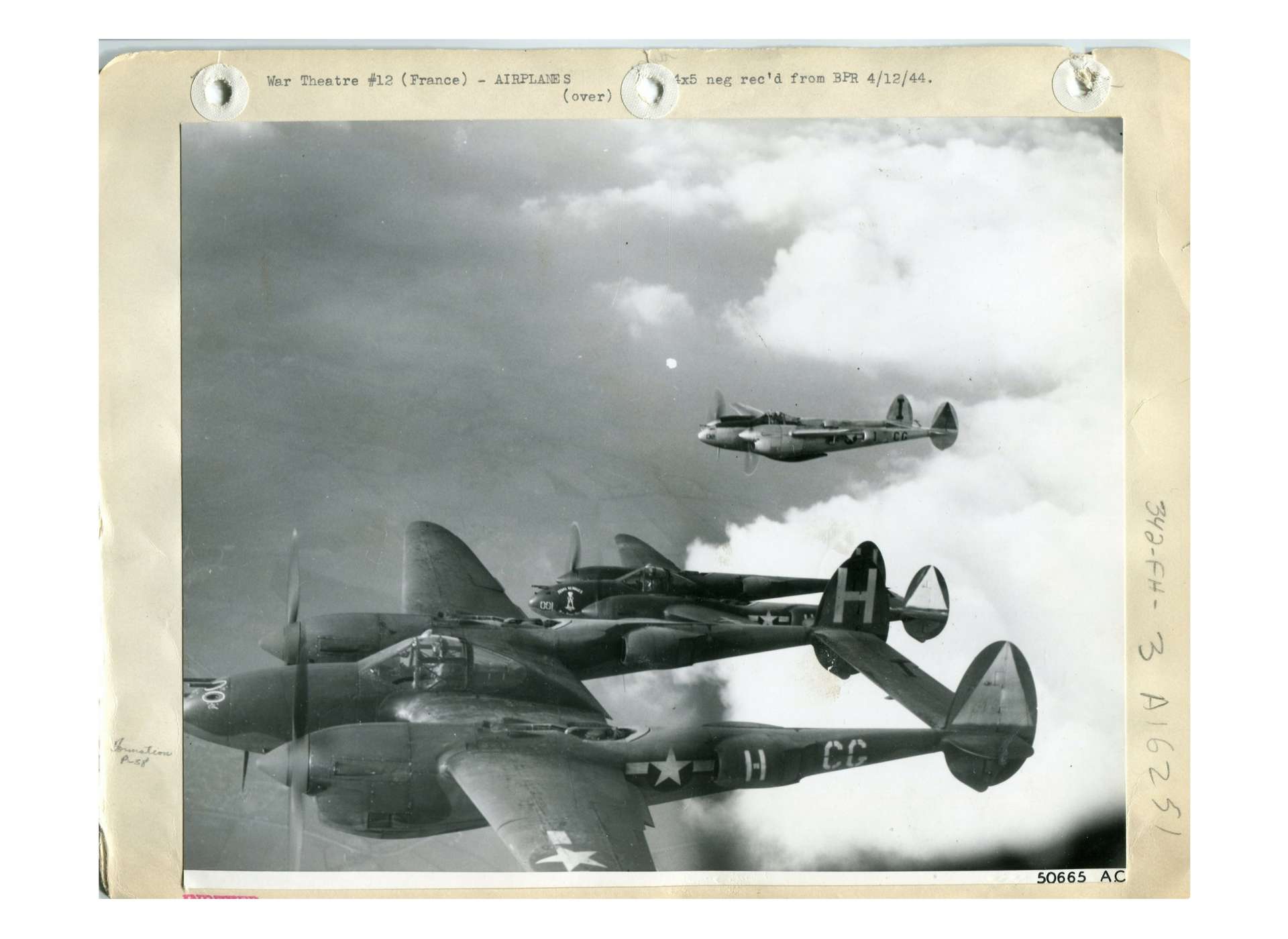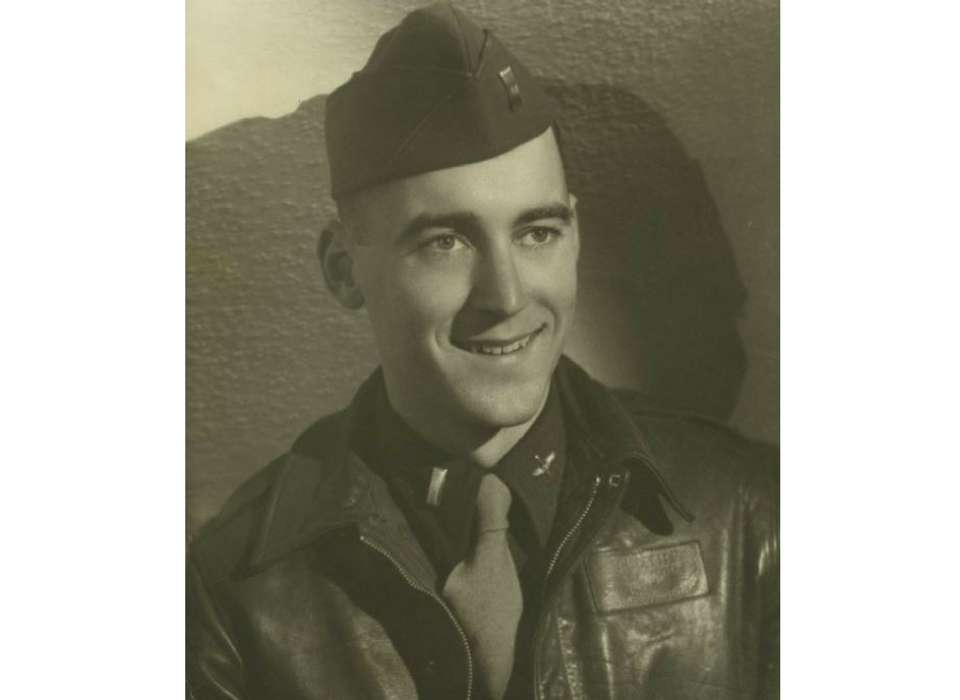In 1955, based on incidents of collaboration with the enemy by American prisoners during the Korean War, President Dwight D. Eisenhower signed Executive Order 10631—the Code of Military Conduct. The code’s six articles were clear directives regarding the expectations of military personnel while engaged in combat and in the event of capture. Although technically not a part of the Uniform Code of Military Justice, the Code of Military Conduct was adopted to combat the coercive brainwashing tactics North Korean captors employed against American prisoners of war, tactics that spread mistrust among their ranks and turned them against each other. Executive Order 10631 also established special training and courses of instruction for servicemembers who were at high risk of capture, flyers especially, that would prepare them mentally and physically to resist their captors.
More than a decade before President Eisenhower signed this directive, First Lieutenant Rexford H. Dettre Jr. lived this code at extreme risk to his life while in German captivity. Dettre’s escape attempts were as numerous as they were brazen. Following one of his foiled excursions beyond the barbed wire, German authorities removed Dettre from the relative comfort of the Allied POW camp system, and for six weeks Dettre fought for his life in a squalid Nazi concentration camp.
Dettre enlisted in the California National Guard at age 15. Three years later, he had proven himself a first-rate soldier and won an appointment to the US Military Academy at West Point. After America entered the war, Dettre’s class was rapidly accelerated. He and his classmates who chose to be aviators earned their wings as West Point cadets in November 1942, two months before they graduated.
Arriving in England in March 1944 as a newly minted fighter pilot, the 22-year-old Dettre was eager for combat. He got his first taste in April, when he flew a low-level fighter sweep with the 20th Fighter Group. Dettre shot up a German air base and received partial credit for shooting down a German bomber. Dettre’s P-38 Lighting carried four 50-caliber machine guns and a 20-millimeter cannon in its nose. With his fighter’s concentrated weapons configuration, Dettre could fire 65 shells per second—firepower that could shred lightly armored targets at a range of 1,000 yards.
A day later, while escorting B-24s back home from a strike in Germany, Dettre’s aircraft developed engine trouble. In a matter of moments, his aircraft became uncontrollable and was shaking itself apart. Minutes from the safety of the North Sea, Dettre had to bail out over occupied territory due to mechanical failure, a bitter pill to swallow if he survived the jump. Unable to roll the aircraft over and drop out of the cockpit, Dettre clambered out onto the wing and prayed he wouldn’t be hit by the P-38’s tail boom when he jumped. After clearing his aircraft without incident, Dettre’s parachute blossomed open and he touched down unscathed on the banks of the Zuiderzee in northwest Holland.

A flight of 20th Fighter Group P-38 Lightnings over England on April 12, 1944 -- just a few days after Rex Dettre went down over Holland. Photo Courtesy of the National Archives.
Dettre quickly gathered up his chute while frantically scanning his surroundings for Germans. He was relieved to see a young boy running up to him and an older man in the distance motioning him to safety. The pair sheltered Dettre in their home until the Dutch Underground came for him.
Over a period of several weeks, Dettre was filtered through a myriad of resistance cells as he made his way through the escape line, traveling by every available means to the Belgian border. Dettre knew his rescuers were risking everything by aiding an Allied airman, and he refused to be a passive observer on his journey. On several occasions, Dettre went out at night with the resistance fighters and fought the Germans with pistol and grenades.
By late July, Dettre had been on the lam for over three months. Along the way he was reunited with a fellow downed P-38 pilot he had flown with back in the States, Dick Scott. Dettre and Scott were on the run together now and headed for a safe house in Brussels that would be their last stop before the Swiss border and freedom. On their last night in Brussels, the owner of the house wined and dined them and congratulated the Americans on evading capture. The next day the owner of the safe house arranged a car and driver for Dettre and Scott. Instead of the border, they were driven straight to Gestapo headquarters. Their host in Brussels, a double agent working for the Germans, was responsible for the capture of hundreds of Allied flyers over the course of the war.
After a month of confinement and interrogation by the Gestapo in Brussels, Dettre and Scott were sent to Stalag Luft III in Poland. Dettre was assigned as a lookout as other men in his barrack tunneled. By late January 1945, the Soviets were fast approaching and the prisoners of Stalag Luft III were evacuated west. Dettre, along with a few other inmates, hid out in the unfinished escape tunnels for two days in the hopes of being left behind; several guards, however, were posted in anticipation of such an occurrence. Dettre and the others were promptly captured and placed in railcars headed west.
As the train passed north of Prague that night, Dettre and Flight Lieutenant Warren J. Sandman, a Spitfire pilot from New Zealand who had been shot down in 1941, jimmied the window on the boxcar and leapt from the train. Dettre and Sandman then began walking towards the Moravian Mountains of eastern Czechoslovakia in an attempt to link up with the partisans who operated there.
"I will never forget that I am an American, fighting for freedom, responsible for my actions, and dedicated to the principles which made my country free. I will trust in my God and in the United States of America."
Code of Conduct for Members of the United States Armed Forces
Three weeks and 400 miles later, Dettre and Sandman were freezing, wet, and starving when they approached a farmhouse for help. The farmer refused and demanded they leave, after which he promptly alerted the Germans. A few miles away, the fugitives stumbled upon a café at a crossroads. With the fear of starvation and freezing to death greater than capture, the two men could not resist the urge to go inside.
Within moments, troops arrived; Dettre and Sandman were rousted outside and thrown up against the side of the building. The officer in command drew his pistol and pressed the barrel hard against Dettre’s temple. After what must have seemed a lifetime to Dettre, the man holstered his sidearm and had the two men thrown onto a truck.
After 10 days of interrogation in Prague, Dettre and Sandman were sent to Theresienstadt Concentration Camp. They were housed with 200 Russian POWs in a cell so small there wasn’t enough room for them all to lie down at once. When they were fed, the food (sauerkraut that was really too salty to eat) was dumped onto the filthy floor of the cell. The Russians, lacking all military bearing at that point, pushed and shoved to get at it. Jewish inmates came around in the mornings with wheelbarrows to collect the dead. It was the first place Dettre landed during his eight-month odyssey behind enemy lines that he did not expect to survive.
After six weeks, inexplicably, Dettre and three other English-speaking POWs were plucked out of a work detail and put on a train. To their relief, the end of the line was a POW camp, Stalag XIIIB. After a month, the camp was liberated by the Americans. Dettre, who had survived his incredible ordeal, was presented with the camp commandant’s pistol in a symbolic surrender ceremony and was sent home to the States.
Dettre, a career military man, faced capture again during the Korean War. On his 110th combat mission, Dettre was shot down over enemy territory by ground fire. In the tense moments that followed, Dettre, in the grasp of a North Korean patrol, exchanged gunfire to keep the hostiles at bay until an American helicopter came to his rescue.
After flying another 89 combat missions during the Vietnam War, Major General Rexford H. Dettre Jr. retired from the Air Force in 1973.
Code of Conduct for Members of the United States Armed Forces
I: I am an American, fighting in the forces which guard my country and our way of life. I am prepared to give my life in their defense
II: I will never surrender of my own free will. If in command, I will never surrender the members of my command while they still have the means to resist.
III: If I am captured I will continue to resist by all means available. I will make every effort to escape and aid others to escape. I will accept neither parole nor special favors from the enemy.
IV: If I become a prisoner of war, I will keep faith with my fellow prisoners. I will give no information or take part in any action which might be harmful to my comrades. If I am senior, I will take command. If not, I will obey the lawful orders of those appointed over me and will back them up in every way.
V: When questioned, should I become a prisoner of war, I am required to give name, rank, service number and date of birth. I will evade answering further questions to the utmost of my ability. I will make no oral or written statements disloyal to my country and its allies or harmful to their cause.
VI: I will never forget that I am an American, fighting for freedom, responsible for my actions, and dedicated to the principles which made my country free. I will trust in my God and in the United States of America.
Larry Decuers
Larry Decuers is a former Curator at The National WWII Museum and veteran of the US Army's 101st Airborne Division.
Cite this article:
MLA Citation:
APA Citation:
Chicago Style Citation:


![Max Fuchs, New York City cantor, sings as Rabbi Sydney [sic] Lefkowitz, Richmond, VA, conducts the first Jewish services from Germany.](/sites/default/files/styles/max_650x650/public/2025-10/image1.jpg)






